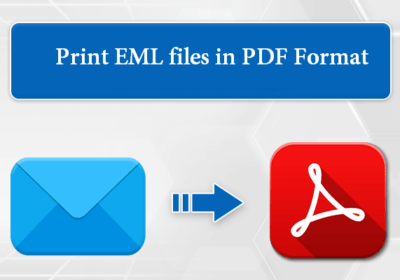
Agile Development Principles: What You Need to Know?
Project management and software development are both significantly benefited by adopting Agile development principles. What does Agile imply in this situation, though? The Agile methodology modifies the way teams approach, plan, and execute projects. Throughout the development process, flexibility, cooperation, and customer-centricity are highly emphasized.
In contrast to archaic, rigid ways, the Agile approach was created to thrive in a constantly changing environment. Regardless of the type of the flaws, this is true. And not just this! Agile encourages incremental value delivery, regular feedback, and iterative development.
Consequently, we will examine a number of Agile development concepts in our blog today. Additionally, we will comprehend the techniques, protocols, and practices. Why don’t you look then?
What are the Agile development principles?
Agile development principles are a collection of fundamental ideals and objectives that guide the Agile process. These guidelines give Agile teams a basis for producing high-quality software that fulfills client requirements. The key concepts of Agile principles are as follows:
- Early and continuous delivery
Agile places a high priority on providing clients with functional products often and as quickly as feasible. This also makes it possible for prompt feedback and ensures that customer needs are met throughout the whole development process.
- Accepting changing requirements
Agile acknowledges that requirements can change, and it embraces these changes. This is even if they occur late in the project. Moreover, the ability to adapt to evolving needs is a fundamental Agile principle.
- Deliver working software frequently
Agile teams aim to deliver functional, tested software at regular intervals. As a result, this incremental approach allows for better control over progress. It also makes it easier to address issues as they arise.
- Collaboration between business & developers
Agile promotes constant collaboration between business stakeholders and development teams. As a result, it ensures that the software being developed aligns with business goals and user needs.
- Build projects around motivated individuals
Agile recognizes that motivated individuals are essential for project success. So, teams should be empowered and trusted to make decisions. As a result, it fosters a sense of ownership and responsibility.
- Face-to-face communication
While Agile acknowledges the value of documentation, it emphasizes face-to-face communication more. Thus, direct interactions lead to better understanding and faster problem-solving.
- Working software as a measure of progress
Agile counts the quantity of completed working software as progress. Moreover, this tangible output is the ultimate indicator of project advancement.
These Agile development principles help in being effective in the process. But what are the different Agile methodologies used to execute the principles? Let’s find out.
What are the different Agile development methodologies?
Agile development methodologies provide structured ways to implement Agile development principles. So, here are some of the most prominent Agile methodologies:
- Scrum
The Agile Scrum framework organizes work into time-boxed iterations called “sprints,” typically lasting 2-4 weeks. As a result, Scrum teams hold daily stand-up meetings and follow defined roles. It is to deliver working increments of the product in each sprint.
- Kanban
Kanban is a visual framework that emphasizes continuous flow. Work items are represented on a Kanban board. Moreover, teams move them through various stages (columns) as they progress. So, Kanban is flexible and doesn’t prescribe specific roles or time-boxed iterations. As a result, it makes it suitable for various workflows.
- Extreme programming (XP)
XP focuses on technical excellence and rapid feedback. Furthermore, it encourages practices like test-driven development, pair programming, etc. Additionally, XP teams work closely with customers to prioritize and deliver features in small, frequent releases.
- Lean software development
Lean principles aim to eliminate waste, optimize processes, and maximize value delivery. So, even if it is not a particular Agile approach, it supports Agile practices. In order to achieve this, constant development and value for the client are emphasized.
- Dynamic systems development method (DSDM)
DSDM is an Agile methodology with a delivery-centric approach to business solutions. It offers a method of project management that is organized. It also places a strong emphasis on user participation, iterative development, and time-boxed delivery.
Let us move further and look at the process of Agile development, taking the Agile development principles into execution.
How are the Agile development principles executed?
Software development is flexible and iterative thanks to the Agile development process. Collaboration with customers, flexibility, and incremental value delivery are given top priority. So, here’s an overview of the execution process of Agile development principles:
- Project initiation
The goal of this phase is to specify the project’s vision and objectives. As a result, this stage represents the identification of important stakeholders. It also covers the crucial function of the product owner. In addition, a high-level project plan is drawn up to direct the next stages.
- Product backlog creation
During this phase, collaboration with stakeholders takes center stage. So, requirements are gathered and meticulously prioritized. As a result, it leads to the creation of a product backlog. Moreover, this backlog is essentially a structured list of features or tasks that need to be addressed in the project.
- Iteration/sprint planning
With the product backlog in place, the team begins to break it down into smaller units known as user stories. Moreover, the team selects a subset of these stories to be worked on during the upcoming iteration. Furthermore, the sprint’s duration is determined, and a clear sprint goal is defined.
- Development
Development activities commence, bringing cross-functional teams together. These teams, comprising developers, testers, and often designers, work collaboratively. It is to implement the selected user stories.
- Continuous integration and testing
Throughout the development phase, developers maintain a practice of continuous integration. This means they regularly merge their code into a shared repository. Moreover, Agile regression testing and automated tests play a critical role. It verifies that new features do not introduce unintended issues.
- Sprint review
At the end of each sprint, the team organizes a sprint review. During this session, the team presents the completed work to stakeholders, gathering feedback and insights.
To execute the process, you need some best practices related to the Agile development principles as well. These practices will help you boost the efficiency of the results. So, let’s take a look.
Defining Agile development best practices: What are they?
Agile development best practices are a collection of principles and methods. It enables teams to produce high-quality software and adopt Agile development concepts effectively. So, here are some of the key best practices in Agile development:
- Continuous integration
Apply CI principles, which involve automated integration of code changes. This is often updated in a common repository. Additionally, early detection of integration problems is ensured by doing this. As a result, it encourages a more stable codebase.
- Automated testing
Put a focus on automated testing, including acceptance, integration, and unit tests. Automated tests also offer quick feedback on code modifications, facilitating the early discovery of flaws.
- User story splitting
User stories should be divided into smaller, more manageable portions. It ensures they can be completed within a single sprint. As a result, smaller stories are easier to estimate and test.
- Daily stand-up meetings
Conduct daily stand-up meetings to keep the team synchronized. Team members share updates on their work and plan their tasks for the day.
- Retrospectives
Frequently reflect on your progress after each sprint. It is to reflect on what went well and what could be improved. Moreover, use retrospectives to identify actionable items for process enhancement.
- Prioritization
Continually prioritize the product backlog based on customer feedback and changing requirements. Furthermore, focus on delivering the most valuable features early.
- Limit work in progress (WIP)
Apply WIP limits in Kanban or similar approaches to manage the flow of work. Moreover, limiting WIP helps prevent overloading the team. It also ensures that work is completed more efficiently.
To sum up
Agile development principles have the ability to transform how teams work and execute in developing software. These principles boost efficiency with the right procedures and practices. We have covered these and more in the blog. As a result, you will be able to go in prepared. So, do not wait any further and execute the Agile principles now!

















